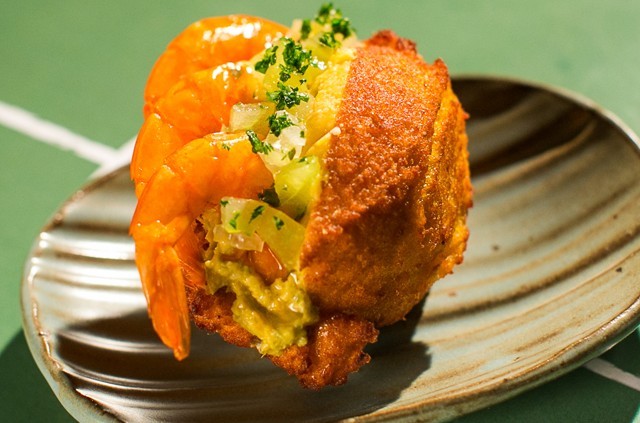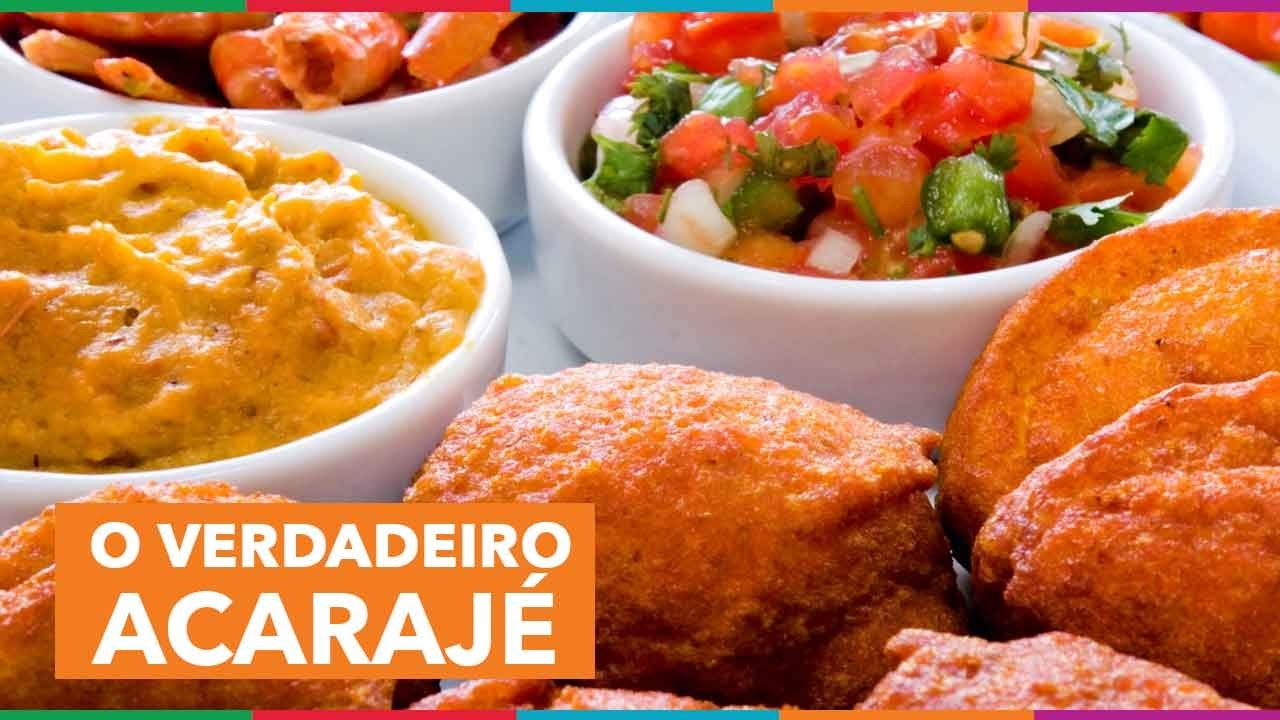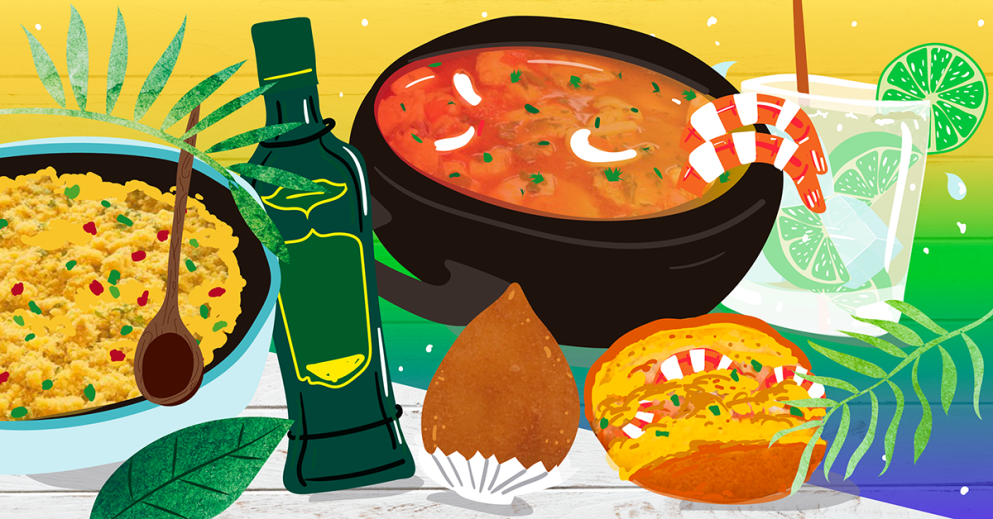Este post também está disponível em:
Português
English
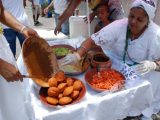
Acarajé is a gastronomic speciality of Afro-Brazilian cuisine.
As well as being the symbol of Bahia, sold on every street corner in Salvador, acarajé is the food of an orisha. “It’s an offering made to Iansã in the candomblé yard.
The wafer is for the Catholic Church just as acarajé and abará are for African religions.
Acarajé is made from a mixture of beans, onions and salt, fried in palm oil.
Acarajé can be served with chilli, dried shrimp, vatapá, caruru or salad, almost all of which are typical components of Bahia cuisine.
Not everyone knows that akará is a sacred food, offered to Oyá, also known as Iansã – the African goddess who controls winds, storms, lightning and fire.
An African legend tells us that after separating from Ogum and joining forces with Xangô, Iansã was sent by her second husband to the land of the baribas in search of a concoction that, if ingested, would give her the power to spit fire.
With her daring, the goddess tasted the liquid and gained the power.
Historical accounts also reveal that to honour the gods, Africans perform ceremonies with fire, such as the akará, where the initiate swallows cotton wool soaked in burning palm oil – a ritual reminiscent of the preparation of the traditional acarajé.
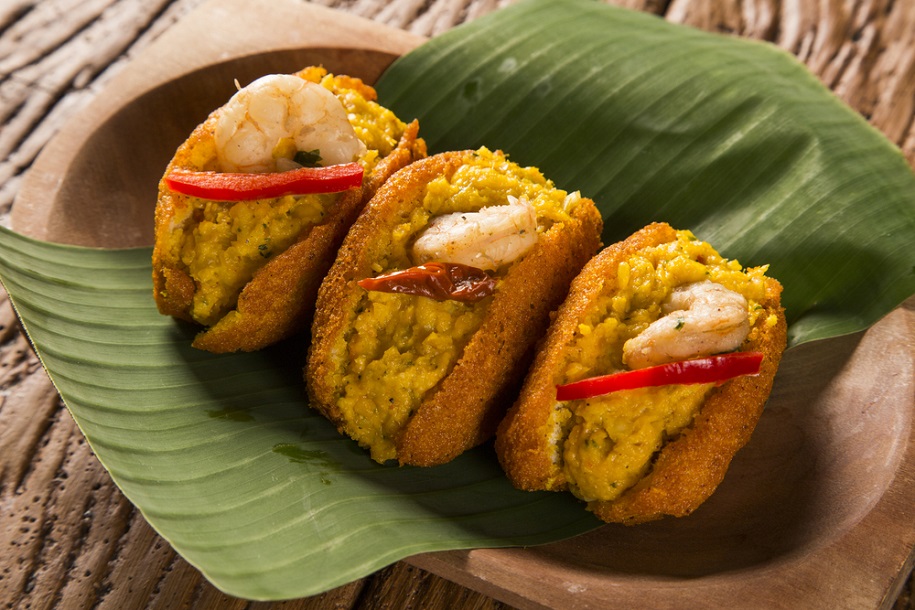
Videos about the history of the Baiana, Acarajé and Acarajé Recipe
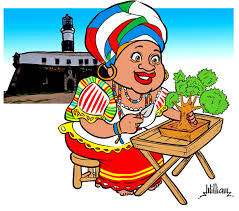
Origin and History of Acarajé
1. History of Acarajé
For at least three centuries, baianas do acarajé have been working on their recipes, which were brought from Africa during the colonial period.
It was the so-called “slaves de ganho”, whose job it was to go out and work for their masters, selling goods on trays, who started the practice. They sold everything from porridge to fried fish, from acarajés to cakes and delicacies such as cocada.
Although they had to pass on a large part of the profit to their owners, the slaves could keep a little of what they received.
And this is how many of them supported their families – and there were even cases of women who managed to buy their own freedom.
No wonder Rita Santos says that the baiana do acarajé was Brazil’s first female entrepreneur.
It was from the profits of the baianas’ trays that the money came to create the religious brotherhoods and finance the candomblé terreiros, yet another argument for the religious importance of acarajé.
For African religions, Iansã, goddess of the winds and storms, sought out Ifá, an oracle, to make food for her husband, Xangó, the orisha of justice, lightning, thunder and fire.
The oracle’s advice was that, after eating, Xangô should speak to his people. When he did this, flames of fire started coming out of his mouth, and the same happened with Iansã.
Everything about acarajé and the baianas is full of symbolism, from the preparation of the recipe to the clothes worn by the cooks. When prepared for Iansã, even as an offering, acarajé is always fried and without toppings.
The craft of the baianas continued after the end of slavery and entered the popular imagination once and for all throughout the 20th century.
In 1939, Dorival Caymmi and Carmen Miranda asked what the baiana had, while Ari Barroso recalled that “on the baiana’s tray there’s vatapá, caruru, mungunzá and umbu”.
In the 21st century, the trade of the baianas do acarajé was inscribed as intangible heritage of Bahia and Brazilian cultural heritage.
The importance of the dish is so great that FIFA, during the Confederations Cup and the World Cup, gave in to strong pressure and allowed the baianas to be inside the Fonte Nova Arena, selling their acarajés, just as they have done for decades.
And there may be more to come: there are those who are calling for acarajé to be declared a World Heritage Site, in a petition that would be made jointly by Brazil and Nigeria, where a version of the dish is breakfast for many.
In the meantime, one thing hasn’t changed – the dish is still linked to faith, even if it’s no longer exclusive to the baianas do acarajé.
2. Buying freedom in Colonial Brazil
In colonial Brazil, acarajé was sold in the streets on trays that slave women balanced on their heads while singing to attract customers. With the sales of the delicacy, many of them were able to buy their own freedom.
The name “acarajé” may be a shortened version of the “pregão” sung by these women at the beginning of the 19th century.
The musician Dorival Caymmi freely reproduced one of them in his song A preta: “O acará jé ecó olailai ô”, which would be the call for customers to buy acarajé.
In the beginning, the refried beans were grated on a stone, 50cm long by 23cm wide, about 10cm high. The flat side, rather than the smooth side, was lightly chopped by a stonemason in order to make it porous or curly.
A cylindrical roller, propelled back and forth over the stone like a grinder, easily crushed the corn, beans and rice, as the author of the first ethnographic description of acarajé, Manuel Querino, explains in his 1916 text “A arte culinária na Bahia” (The culinary art of Bahia). It was only with the passage of time that electric mills appeared to make the work easier.
“When my grandmother taught me how to make acarajé, we still grated the whole bean on the stone to break it, today we buy the broken bean,” says Regina, a “baiana” for 37 years and one of the most traditional in Salvador. She also says that acarajé used to be served in banana straw with just chilli peppers, but customers became more demanding and the baianas started adding new fillings such as salad, vatapá, prawns and caruru.
3. Religiosity and Acarajé
Before, the only people authorised to sell acarajé were the daughters of Iansã and Xangô, but because of the popularisation of the delicacy, baianas of all religions began to appear.
Today, as well as women, you can also find men making acarajé.
The interesting thing, however, is that they all preserve an unshakeable respect for the rituals surrounding the act of preparing the dumplings.
The famous Regina, for example, doesn’t pick up the materials without first taking an “axé bath” (leaf bath). When she arrives at her point in Itapuã, she makes seven small acarajés to clean up and leave the street free and calm.
4. Standardisation of the Acarajé
Recently, a survey showed that the quality of the acarajés sold in Salvador was not so good.
In order to change this assessment, the activity of the baianas was regulated by municipal decree 12.175/1998 and subsequent ordinances, which also indicate the standardisation of clothing and trays, taking special care of hygiene in the preparation and handling of the food. A minimum distance of 50 metres was also set between the trays.
Currently, in order to sell the delicacies, the baianas must be instructed through courses and have also received financial support to maintain the trays, which are now inspected. The initiative demonstrates the concern to preserve the tradition of acarajé, keeping it among the main attractions on the menu for both the locals and the thousands of visitors who come to Bahia every year. This is part of the culture and heritage of the Bahian people!
5. Acarajé da Baiana
Baiana selling acarajé in the streets of Salvador.
Acarajé is also a typical dish of Bahian cuisine and one of the main products sold on the baiana’s tray (the name given to the container used by the baiana do acarajé to display the food), which is more heavily seasoned and more flavoursome, unlike when made for the orixá.
The way it is prepared is practically the same, the difference lies in the way it is served: it can be cut in half and filled with vatapá, caruru, sautéed prawns, chilli and green and red tomato salad with coriander.
The acarajé is similar to the abará, differing only in the way it is cooked. Acarajé is fried, while abará is steamed.
The ingredients for acarajé are half a kilogram of peeled and ground black-eyed peas, 150g of grated onion, a dessert spoon of salt or salt to taste and a litre of palm oil for frying.
The prawn filling is made with 4/6 cup of palm oil, 3 chopped onions, garlic to taste, 700g of smoked prawns without shells and green smell, sautéed for 10 to 15 minutes. You can add tomatoes and coriander, and as mentioned above, caruru, vatapá and chilli sauce.
Bahia.ws is the largest travel and tourism guide for Bahia and Salvador.
